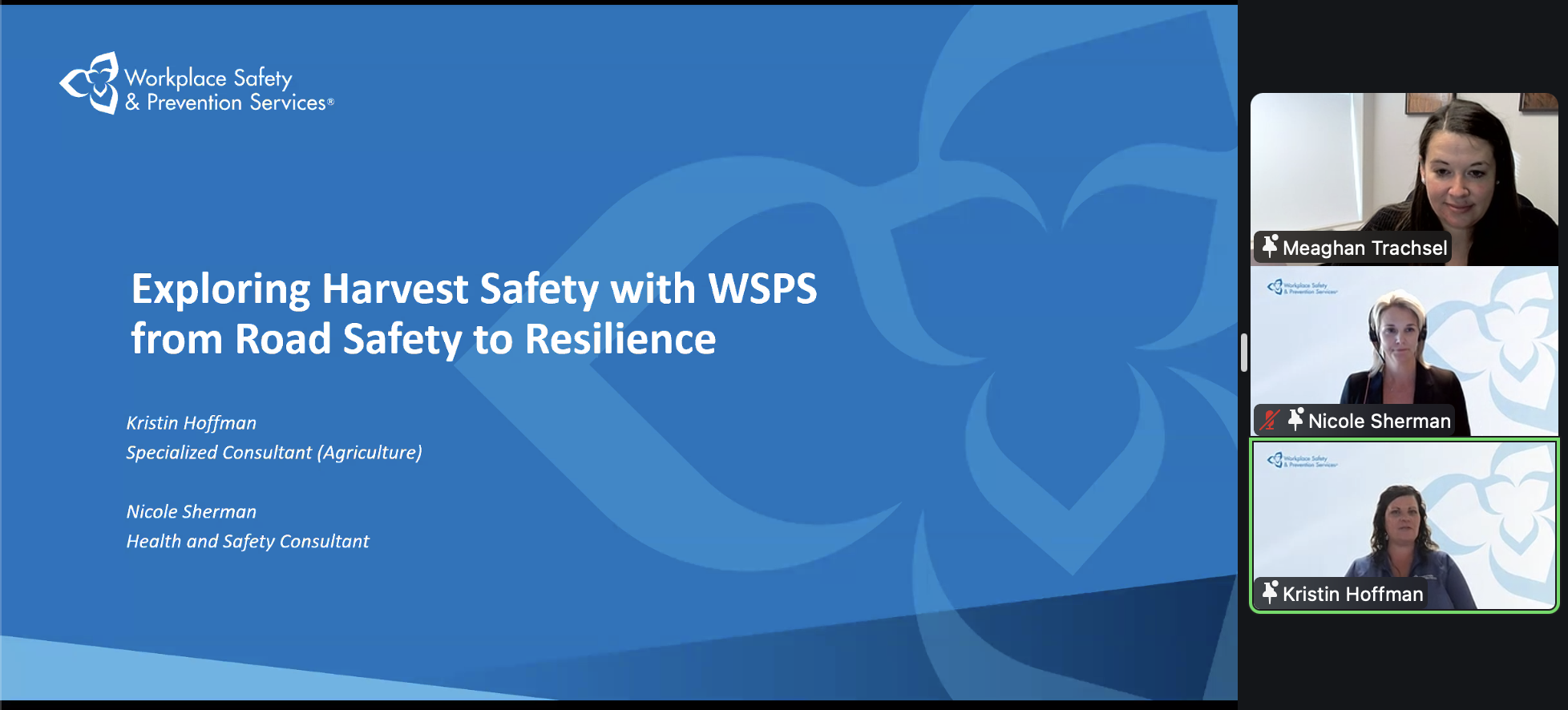(Resource News International) — Recent frosts were not believed to have caused any serious damage to Manitoba’s corn and soybeans, but they were thought to have been a signal to the crops that the drydown process needs to begin, industry officials said.
“The frost received overnight on Sept. 28 gave Manitoba’s corn crop the signal to start shutting down the growth stage and begin the dry down process,” said Theresa Bergsma with the Manitoba Corn Growers Association at Carman, Man.
Temperatures that night/morning dropped down to the -2°C to -3°C range and lasted about five hours in duration. In some of the lower lying areas of Manitoba, the readings were said to have dropped a bit lower.
Read Also

Tips for staying safe this harvest season
Kristin Hoffman of WSPS explains measures for increased farm safety around harvest season
Light frost also hit Manitoba overnight Sunday in select areas of the province, Environment Canada said.
There were few reports of any significant frost damage, but it was likely there will be a few fields that will be lighter than they should be.
The key now is for the drydown of the corn crops to occur, she said.
“My biggest concern is that the weather conditions stay too wet, which can cause some issues with mould to come forward,” Bergsma said.
“Not all of the husks on the corn plant are open yet, and that is very important for the dry down of the cob,” she said. “If those husks stay tightly closed, and if it stays damp, that is when the mould can develop.”
Bergsma acknowledged that the dry and warm conditions during September helped the maturation process of the corn crop.
Producers will wait until the husks have dried down before harvesting, which could still take the harvest into late October or a bit later, she said.
“It is a cheap way to dry down the corn and there are a number of producers in Manitoba that decide to wait until the spring to harvest those fields,” Bergsma said. “However, in doing that, the producers do not have the fields in order for spring seeding operations.”
“Did not kill”
Brent Reid, a pulse specialist with Manitoba Agriculture, Food and Rural Initiatives at Dugald, Man., said soybeans in the province were similar in nature to corn, where the frost was a signal to the plant to start shutting down the growing process.
“The frost received that Monday evening, was cold enough to take the leaves off the plant, but did not kill or freeze through the pods,” he said. “If the temperatures had gotten down into the -10°C range, that indeed would have been the end of the plant.”
Warm temperatures experienced during September also benefited soybeans by speeding up the maturity process, Reid said.
“I think soybeans gained a lot of ground in September, and the majority of those fields were at the point where the frost did very little damage,” he said.
However, he noted the crop was still about two weeks behind in growth in certain locations in the province and there will be some issues with green pods that will need to be dealt with.
Some of Manitoba’s soybean harvest has been completed, and other producers were currently in the process of harvesting, Reid said.
He estimated the soybean harvest in Manitoba would likely be done, assuming the weather cooperates, by the third week in October.











